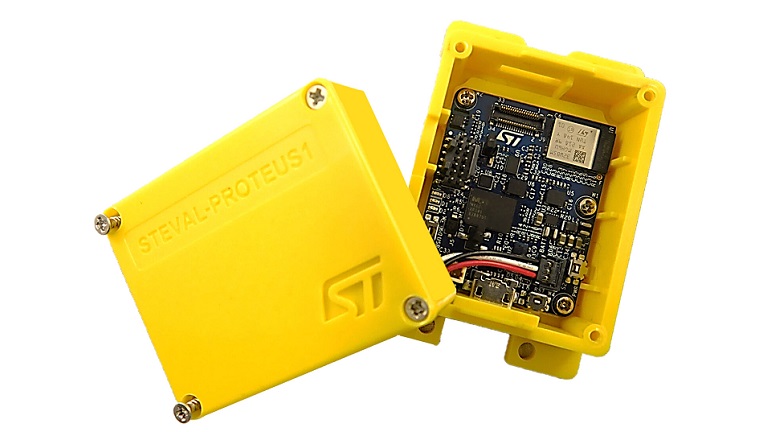Key Considerations of Condition Monitoring
Condition monitoring is one of the pivotal ways in which the advent of Industry 4.0 is bringing about major improvements within the industrial sector. It means that valuable information can be derived concerning the state of health of the numerous items of equipment located in processing plants and manufacturing sites.
By looking at compiled data relating to different operational parameters, tell-tale signs of potential issues that need addressing can be uncovered - so that deterioration in performance, unwanted malfunctions or catastrophic failures are safeguarded against. In addition, condition monitoring will contribute to predictive maintenance efforts, helping to indicate when component parts need to be replaced and meaning the disruptive machine downtime can be avoided.
With players in the industrial space now seeing the value in it, the global market for machine condition monitoring is expanding at a considerable pace. Analyst organisations including Moor Intelligence and Grand View Research estimate that it is currently achieving close to double-digit growth rates. MarketsandMarkets predicts that it will move from $2.8 billion worth of annual revenue last year to $4 billion by 2027.
Factors influencing design and deployment
To successfully implement an effective condition monitoring system, the following points must be taken into account:
- Which parameters will data need to be acquired on? - These might include vibrations, temperature, pressure, mechanical strain voltage and current.
- How regularly will this data need to be acquired? - Mission-critical machinery in factory production lines may need data to be accessed constantly, while for IIoT nodes checks must be done less frequently (to conserve battery power).
- What degree of accuracy will be needed? - Where the sensors are placed and the nature of the application environment can impact on the quality of the sensor data, with greater accuracy levels being mandated in such situations.
- What effects will the surrounding environment have on the hardware involved? - The challenging nature of industrial settings means that monitoring systems need to be adequately robust.
- How will data be transferred from its original source to where it is needed? - Data acquired by sensors in close proximity to machinery will need to be sent back to some centralised place for analysis. For IIoT nodes running off batteries, 2.4GHz connectivity or a LPWAN protocol will be utilised (according to particular needs).
- Once received, how will data analysis be accomplished? In order to determine the presence of possible anomalies or underlying operational trends, and subsequently take actions to address them, captured data will need to be given in-depth scrutiny. In the years ahead this will increasingly rely on application of sophisticated artificial intelligence (AI) algorithms running at the edge, rather than the involvement of human operatives.
With all of these points considered, the next step is to select a development solution that can provide assistance in dealing with each of these in turn.
Providing a foundation for developing condition monitoring systems
Available via Avnet Silica, the STEVAL-PROTEUS1 from STMicroelectronics is a convenient evaluation platform intended for use by engineers involved in creating and implementing condition monitoring systems within modern industrial settings. Leveraging this hardware (and its accompanying software elements) simplifies the whole process of experimenting with different design concepts, building prototypes and then finally constructing a fully functioning solution. As a result, development projects can be completed in much shorter time periods and less strain placed on overloaded engineering staff. Avnet Silica is making it easy to get hold of one - fill in the following request form here.
Through STMicroelectronics’ STEVAL-PROTEUS1, regular updates relating to temperature levels and intensity of vibration can be accessed. Housed in a rugged enclosure, it showcases many of the company’s latest technological innovations.
Central to its functionality is the compact ultra-low-power STM32WB5MMG wireless module. This transfers data in the 2.4GHz frequency band, with BLE v5.2, ZigBee 3.0 and IEEE 802.15.4-2011 (PAN) protocols all being supported. The module features a highly integrated wireless system-on-chip (SoC) with a dual-core 32-bit Arm® Cortex-M4 processing resource and a Cortex M0+ for radio tasks. An STSAFE-A110 secure element is incorporated that provides all the necessary data protection and authentication functions. Compatibility with NanoEdge™ AI Studio enables integration of AI analysis algorithms.
To take care of the vibration monitoring aspect, the platform has a MEMS-based ISM330DHCX 3D digital accelerometer/gyroscope, plus a IIS3DWB ultra-wide bandwidth 3-axis digital vibration sensor. Alongside these there is the IIS2DLPC, which is an ultra-low power accelerometer employed for the system wake-up function. The built-in STTS22H digital temperature sensor delivers high precision (±0.5°C between -10°C to +60°C) temperature data.
Application example firmware has been preloaded onto the platform’s 1MByte capacity flash memory, to give engineers inspiration before they start on the condition monitoring projects. Power can be drawn from the LiPo rechargeable battery, or through a USB interface. The STBLE sensor mobile app supports the kit to make it simpler and more intuitive to use, and to enable its control remotely.
Win a STEVAL-PROTEUS1 Evaluation kit
Enter our competition for a chance to get your hands on a free evaluation kit.
Follow Avnet Silica on LinkedIn
silica content library/articles/key-considerations-of-condition-monitoring
Key Considerations of Condition Monitoring | Avnet Silica

